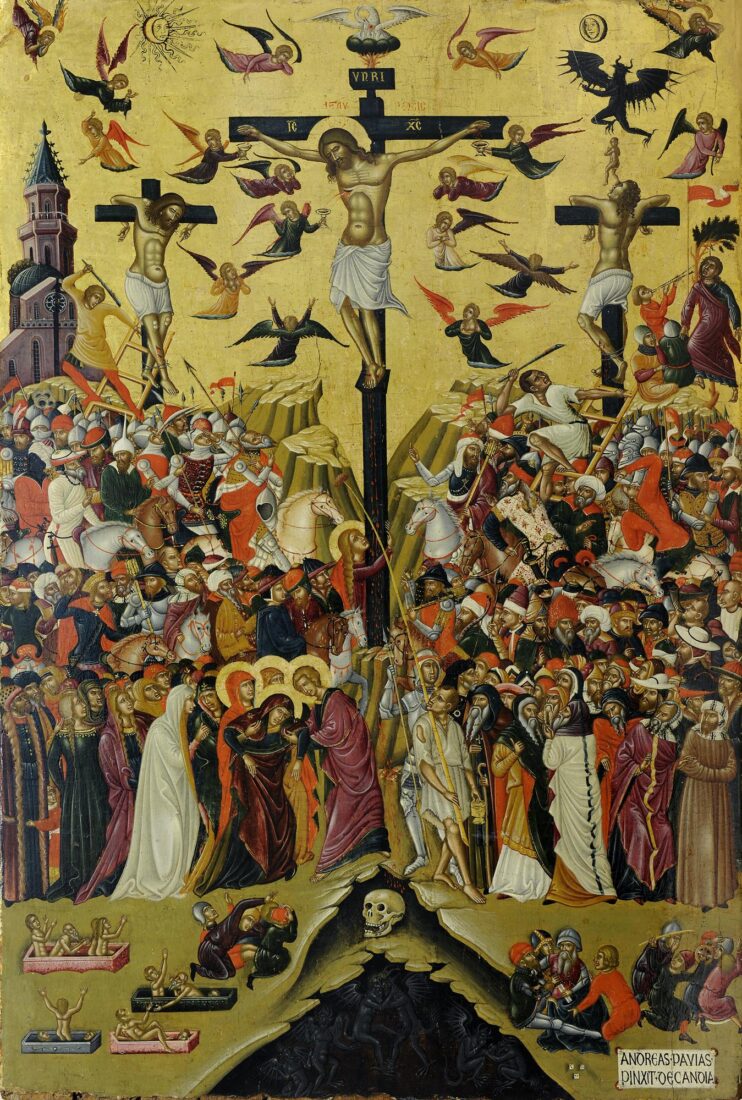We use cookies to make our site work properly, to personalize content and ads, to provide social media features and to analyze our traffic. We also share information about how you use our site with our social media, advertising and analytics partners. Read the Cookies Policy.

Pavias Andreas (ca 1440 - between 1504-1512)
The Crucifixion, second half of the 15th century
Egg tempera on panel, 83,5 x 59 cm
Alexandros Soutzos Bequest
The “Crucifixion” of Christ and the two thieves, the good and the bad, was painted by Andreas Pavias in the latter half of the 15th century, using egg tempera on a wood panel, that is, adhering to the traditional Byzantine iconography process.
The scene is dramatically narrated in many episodes, against a flat golden background. Reminding us that we are dealing with an idealistic rather than a realistic painting, in Byzantine art the golden background denotes the sky; the figures are divine, transcendental, existing outside of time and place, in the infinite space-time. The figures seem lit from within themselves rather than by an external source of light. The scene is arranged in three levels, leading the eye upward, without perspective or depth. On the bottom left is depicted the resurrection of the dead, who can be seen rising from their graves; on the right hand side, the painter has portrayed the soldiers, playing dice for Christ’s crimson robe. In the middle ground, there is the colourful crowd, witnessing the tragic event; the main scene shows the Madonna fainting, supported by the Holy Women and St John, while St Magdalene is throwing her arms around the Holy Cross in lament. A colourful crowd in exotic costumes and hats, horses and a wealth of details complete the scene. On the upper, third section, in which the crosses with the bodies of Christ and the two thieves are portrayed, angels are flying about, in deep lamentation, while others are collecting the Saviour’s sacred blood in chalices. In the background on the left, an angular building structure evokes the Church of the Holy Sepulchre. There is a multitude of always meaningful detail, such as the stork above the Holy Cross, piercing its own breast in order to feed its young ones – a symbol of Christ’s sacrifice in order to save Humanity from the original sin.

